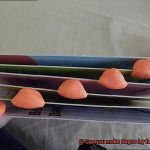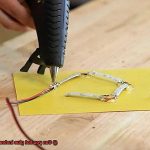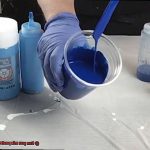Are you tired of those pesky tack strips that always seem to peek out from under your carpets? Or maybe you’re worried about the damage they could cause over time. Fear not, my friend. In this article, we’ll be tackling the big question on everyone’s mind- can you install carpet without tack strips?
While tack strips have been a traditional method for securing carpeting, they often lead to wear and tear in the long run. But if not tack strips, then what? There are alternative methods to keep your carpets in place such as using strong glue, double-sided tape, or even heavy furniture.
But let’s be real- these methods come with their own set of challenges. So can you really install carpet without tack strips? Yes, it is possible. The key is finding the right method that works for you.
Stick around for the rest of this article as we explore different options and dive into details on how to keep your carpets secure and looking fabulous. Say goodbye to those unsightly tack strips and hello to a new way of installing carpet.
What is Tack Strip Installation?
Contents
- 1 What is Tack Strip Installation?
- 2 Advantages of Glue-Down Carpet Installation
- 3 Preparing the Subfloor for Glue-Down Installation
- 4 Applying the Adhesive
- 5 Creating a Seamless Look
- 6 Drawbacks to Glue-Down Installation
- 7 Tips for a Successful Glue-Down Carpet Installation
- 8 When to Consider Tack Strip Installation Instead
- 9 Conclusion
Tack strip installation is an essential process that provides secure anchoring for carpets in residential and commercial flooring installations. It involves using strips of wood or metal with small tacks or nails around the perimeter of the room to prevent shifting or movement of the carpet.
To begin with, the subfloor must be prepared by removing any existing carpet or flooring and thoroughly cleaning it. Once the subfloor is ready, the tack strips are installed with sharp tacks facing upwards. Then, the carpet is stretched over the tack strips and pushed down onto the tacks to create a firm fitting.
Despite its popularity, alternative methods such as glue-down or double-sided tape installation can be used in situations where traditional tack strip installation is not possible or desirable. Glue-down installation involves using a special adhesive to secure the carpet directly to the subfloor and provides a seamless look. However, careful assessment of the subfloor condition is necessary before installation.
Double-sided tape installation is another alternative method that eliminates the need for tacks or nails by attaching the carpet to the subfloor with double-sided tape. This method is particularly useful in situations where traditional tack strip installation is not feasible.
It is crucial to consider all options before choosing a method for securing your carpet to ensure a successful and long-lasting flooring installation. Consulting with a professional installer can provide valuable guidance in making this decision.
Advantages of Glue-Down Carpet Installation
If you’re on the hunt for a flooring solution that is both durable and low-maintenance, look no further than glue-down carpet installation. This method is gaining popularity among homeowners as it offers numerous advantages over traditional tack strip installation.
One of the most significant benefits of glue-down installation is its durability. The adhesive creates a strong bond between your carpet and the floor, making it more resistant to wear and tear in high-traffic areas or homes with pets or children. This means you won’t have to worry about constantly replacing worn-out carpets.
Another advantage of glue-down installation is that it eliminates the need for tack strips, which can be a tripping hazard and come loose over time. This provides a safer environment for you and your family. Plus, without tack strips, you can achieve a seamless appearance without any visible seams or edges. This is perfect for rooms with large areas or irregular shapes that may require multiple pieces of carpet.
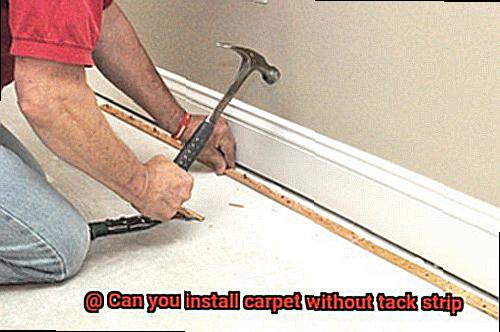
But that’s not all – glue-down installation can also help reduce noise levels in your home. The adhesive creates a barrier between the carpet and the floor, which helps absorb sound and reduce echo. This is especially beneficial for homes with open floor plans or high ceilings.
Maintaining a glue-down carpet is also effortless, thanks to the absence of tack strips. You can easily vacuum or sweep the carpet without getting stuck on anything. Plus, spills and stains are easy to clean up with regular carpet cleaning solutions.
Preparing the Subfloor for Glue-Down Installation
If you are, it’s crucial to prepare the subfloor correctly to ensure a perfect installation. As an expert in preparing subfloors for glue-down installation, I’ve put together some tips to help you achieve a beautiful and secure carpet finish.
The first step in preparing the subfloor is to ensure that it’s clean, dry, and smooth. Start by removing any existing flooring and cleaning the subfloor thoroughly. Use a scraper to remove any adhesive residue or chunks of old flooring stuck to the subfloor. Afterward, sweep or vacuum up any remaining debris.
Next, check the subfloor for protrusions like nails or screws that can damage your carpet. Remove or countersink these into the subfloor and fill any gaps or cracks with a self-leveling compound to create a smooth surface.
With a clean and smooth subfloor, it’s time to choose an appropriate adhesive for your carpet type and subfloor material. Apply the adhesive in small sections using a trowel, being careful to spread it evenly without leaving any gaps or ridges.
After applying the adhesive, lay the carpet onto the subfloor and press it down firmly with a carpet roller or similar tool. Trim the edges of your carpet as needed, and allow the adhesive to dry completely before walking on it.
In summary, preparing the subfloor for glue-down installation is crucial in achieving a seamless and secure carpet finish without tack strips. Here’s a quick checklist of what you need to do:
- Clean and smooth the subfloor
- Remove any protrusions like nails or screws
- Fill gaps or cracks with self-leveling compound
- Choose an appropriate adhesive
- Apply adhesive evenly
- Press carpet down firmly

Applying the Adhesive
Installing carpet without tack strips can be a challenging task, but applying the right adhesive can make all the difference. Choosing the proper adhesive that suits your carpet and surface is vital to ensure a seamless and secure finish that will last for years to come. Here are some crucial points to keep in mind when applying adhesive:
- There are two common types of adhesive used for carpet installation: pressure-sensitive and hot-melt. Pressure-sensitive adhesive is easy to apply and can be used on a variety of surfaces, while hot-melt adhesive creates a strong bond and is ideal for high-traffic areas.
- Following the manufacturer’s instructions is essential when applying adhesive. Applying the adhesive in the correct quantity and allowing it to dry or cure properly before laying the carpet is crucial for a long-lasting installation.
- Cleaning the surface thoroughly before applying adhesive is essential. Any debris or contaminants on the surface can weaken the bond between the carpet and the floor, leading to shifting or wrinkling over time.
- It’s important to address any bumps or unevenness in the surface before installation to ensure a smooth and even finish.
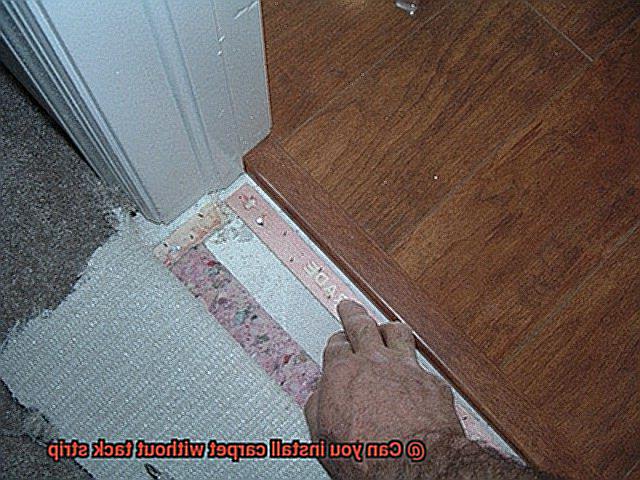
Creating a Seamless Look
As an expert in creating a flawless finish during carpet installation, I have some tips and tools that are bound to help you achieve the perfect result.
To begin with, selecting the right adhesive for your carpet and surface is crucial. Always follow the manufacturer’s instructions carefully and clean the surface thoroughly before installation. Make sure there are no bumps or unevenness in the surface before starting.
Now, let’s explore the exciting tools that can help create a seamless look. One such tool is the power stretcher, which is a game-changer when it comes to stretching carpet tightly across the floor, ensuring that it is smooth and even. By attaching one end of the carpet to the power stretcher and using leverage to pull it taut, this tool helps you tackle larger rooms or areas with uneven subflooring.
Another tool that works wonders in creating a seamless appearance is the seam iron. The seam iron is specifically designed for joining two sections of carpet together, creating a seamless look. By heating up a glue strip on the back of the carpet and melting it onto the adjacent section of carpet, this tool creates a strong bond between the two sections, ensuring they stay in place and create a seamless look.
The type of carpet you choose also plays a crucial role in achieving a seamless finish. Carpet tiles are designed to fit together seamlessly without the need for tack strips or other installation tools. They can be easily cut to size and laid down in any pattern or configuration desired.
It’s important to note that installing carpet without tack strips may require some additional tools and techniques, but achieving a seamless look is definitely possible. By using power stretchers and seam irons alongside choosing the right type of carpet, homeowners can create a beautiful and seamless installation that will last for years to come.
Drawbacks to Glue-Down Installation
If you’re looking to install carpet without tack strips, glue-down installation might seem like a convenient option. However, it’s important to consider its drawbacks before making a decision.
Firstly, beware that glue-down installation is a time-consuming process. It involves carefully applying adhesive to the subfloor, placing the carpet on top, and ensuring a secure bond. Compared to traditional methods like nailing or stapling the carpet onto tack strips, glue-down installation can take longer.
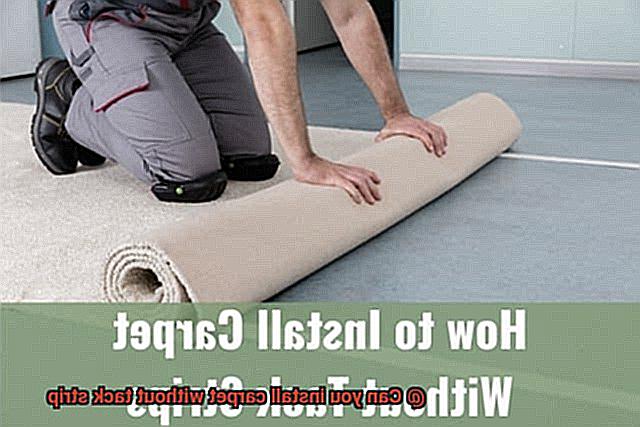
Another major drawback of glue-down installation is that it can be difficult to remove the carpet later on. Since the carpet is glued directly to the subfloor, removing it may require using chemicals or solvents to dissolve the adhesive. This process can be messy and time-consuming and may even damage the subfloor in the process.
In addition to these concerns, certain types of carpet materials may not adhere well to the adhesive used in this method or may become damaged over time due to its use. Be sure to consult with a professional installer before choosing glue-down installation to ensure that your chosen carpet is suitable for this method.
Lastly, it’s worth noting that glue-down installation may not provide as much cushioning or soundproofing as other methods. Without padding or underlayment, the carpet may feel harder underfoot and may not absorb as much noise as traditional installations. This could be problematic if you have sensitive family members or live in an apartment building.
Tips for a Successful Glue-Down Carpet Installation
While it may seem intimidating, following these key tips can help ensure a successful installation without the need for tack strips.
First and foremost, proper surface preparation is crucial. The surface must be clean, dry, and free from any debris or contaminants. Any bumps or unevenness on the surface should also be leveled out before proceeding with the installation.
Choosing the correct adhesive is also essential for a successful glue-down carpet installation. Different types of carpet require different adhesives, so make sure to consult with a professional or manufacturer to ensure you’re using the correct one.
Temperature and humidity control are important factors to consider during the installation process. Both temperature and humidity can impact the adhesive’s performance, so ensure that the room temperature is within the recommended range and that humidity levels are controlled.
Precise cutting of the carpet is another important factor to consider for a perfect fit. Take accurate measurements and cut accordingly to ensure there are no gaps or overlaps.
When applying adhesive, be sure to do so evenly and generously on both the surface and back of the carpet. Using a notched trowel can help spread the adhesive evenly, avoiding any lumps or bumps.
Finally, after laying down the carpet, use a carpet roller to smooth out any wrinkles or bubbles in the carpet. This will ensure that it adheres properly to the surface without any unsightly bumps or ripples.
When to Consider Tack Strip Installation Instead
Carpet installation can be an overwhelming task, especially if you’re not sure which method to choose. Tack strips are a popular option, but when should you consider this installation method over others? As an expert in the field, I can guide you through some situations where tack strip installation might be the best choice.
Firstly, if your subfloor is concrete, it can be challenging to nail tack strips into place. In such cases, using a specially designed adhesive for concrete floors is recommended. This will ensure that your carpet remains securely in place without damaging the subfloor.
Secondly, if you have a curved or irregularly shaped room, getting the carpet to lie flat against the wall can be challenging. Wrinkles and bunching can make your carpet look unappealing. Tack strips can help keep the carpet in place and prevent it from bunching up, ensuring that your carpet looks perfect.
Thirdly, installing carpet on stairs requires tack strips. Stairs are high-traffic areas that can be dangerous if the carpet comes loose or starts to bunch up. Tack strips help keep the carpet securely in place and prevent accidents.
In general, tack strips are the most reliable and secure method of installing carpet. They provide the best results in most cases and are easy to install with professional help. However, if you’re still unsure about whether or not you need tack strips for your installation project, it’s always best to consult with a professional carpet installer who can provide expert advice based on your specific needs and circumstances.
Conclusion
In conclusion, the traditional method of carpet installation using tack strips is not the only option available. While it may work for some, others may find that it causes wear and tear over time or presents a tripping hazard. Fortunately, alternative methods like glue-down or double-sided tape installation can be used in situations where traditional tack strip installation is not feasible.
Glue-down installation offers numerous advantages over traditional tack strip installation, including durability, safety, noise reduction, and low maintenance. However, to achieve a successful glue-down carpet installation without tack strips, proper surface preparation is crucial. Choosing the correct adhesive and ensuring temperature and humidity control are also essential factors to consider during the installation process.
While glue-down installation may take longer than other methods, it provides a seamless look that eliminates visible seams or edges. Plus, there’s no need to worry about tripping hazards caused by exposed tack strips.
However, it’s important to note that glue-down installation may not be suitable for all situations. For instance, removing the carpet later on may be difficult with this method. Additionally, certain types of carpet materials may not adhere well to the adhesive used in this method. Finally, it may not provide as much cushioning or soundproofing as other methods.
Ultimately, whether you choose to use tack strips or alternative methods depends on your specific needs and preferences. Consulting with a professional installer can provide valuable guidance in making this decision based on individual circumstances.



